Help For Chocolate Lovers!
Raw Chocolate (Cacao And Cacao Butter)—How To Use 'Em
Valentines Day rarely comes and goes without indulging in chocolate in all sorts of ways. So it's with this practice in mind that I turn to this popular subject—our love of chocolate.
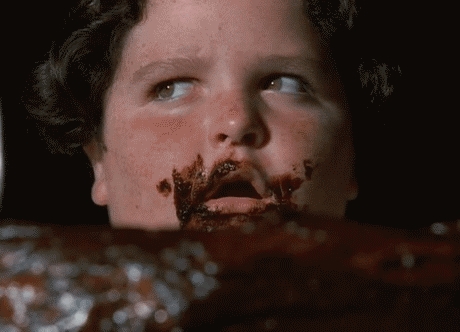
We've all heard that dark chocolate is a healthier choice than milk chocolate and that the cocoa in chocolate can offer a wide range of health benefits. What's not always talked about is that most dark chocolate today is so highly processed that it loses much of its nutrient and antioxidant strength and really provides nothing more than excess sugar and fat.
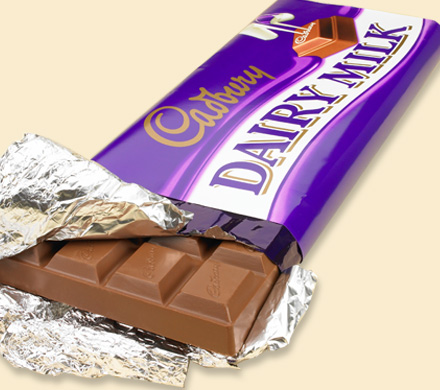
But chocolate-lovers take heart. More and more "healthy" chocolate is hitting the market, especially in the form of raw chocolate—cacao, to be exact. Nope, I didn't spell it wrong, it's cacao, and not cocoa (if you're after a healthier version of chocolate, that is).
To make the chocolate that we're most familiar with and love (COCOA), raw cacao beans are roasted to form cocoa, which is then combined with sugar and fats until the beans are unrecognizable. The high heat during the roasting process reduces the levels of antioxidants in the cacao, minimizing the powerful health benefits found in the unprocessed, raw cacao. Bottom line? To receive the greatest benefits from cacao, look for 'raw,' non-roasted cacao beans.
To help us in our quest for healthy chocolate, I found this quick guide, written by Jessica Zack, on a site I look to for accurate, non-biased health information, Built Lean (www.builtlean.com). Here's her well-researched facts about raw chocolate, including its impressive health benefits, where to buy it, and how to incorporate this super-food into your diet.
First, what exactly is cacao? Cacao (kaEcow) is the raw, unprocessed form of chocolate. These untreated seeds referred to as cacao beans, are considered a super-food offering a wealth of antioxidants and essential vitamins and minerals. The beans are grown in pods on trees, and after careful harvesting, the pods are opened, the seeds are removed, and they undergo a natural fermentation and drying process. After the drying process is completed in 1-2 weeks, the result is raw cacao beans.
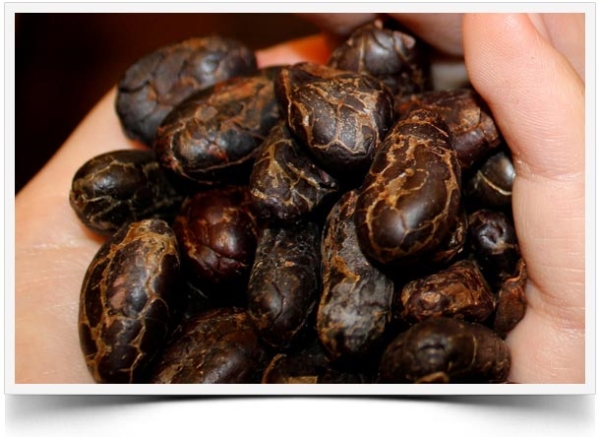
Next, what's in the cacao bean to make it such a big health deal? The word cacao translates to "the food of the gods" in the Greek language, and for good reason. Let's start with the fat content—an essential heart-healthy fat, mono-unsaturated fat as oleic acid. And this fat, also known as cacao butter, can be used as a moisturizer to nourish hair and skin. Because it is a stable fat, it has a long shelf life without fear of becoming rancid. For those who would rather eat this silky treat, research shows it improves memory and mood, and boosts immunity because of its amazing antioxidant properties.
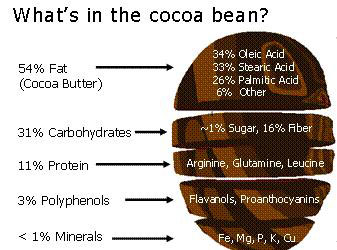
And besides this superior fat, and protein and fiber, raw chocolate contains many important vitamins and minerals including:
- Magnesium, and other essential minerals including calcium, sulfur, zinc, iron, copper, potassium, and manganese
- Polyphenols called flavonoids, with antioxidant properties
- Vitamins: B1, B2, B3, B5, B9, E
Raw chocolate nutrients are linked to several health benefits:
- 1. lowering blood pressure and improving circulation
- 2. promoting cardiovascular function and health
- 3. neutralizing free radicals
- 4. improving digestion
- 5. improving physical and mental health (through serotonin release)
Raw Chocolate Buying Tips? Look for 100% pure Cacao butter that is organically grown and contains no added preservatives or chemical stabilizers. Cacao beans (peeled or unpeeled), nibs, and powder can be found at most health food markets and online at Amazon, or Navitas Naturals (www.navitasnaturals.com).
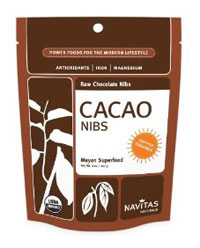
Note: Cacao nibs are cacao beans that have been peeled and crushed, while cacao powder is made from peeled and cold-pressed cacao beans.
Watch for labels that read "raw" chocolate or cacao. Raw beans are not roasted, and are only fermented and dried, thus conserving their super-food composition. And avoid labels that read "roasted" chocolate or cacao. When the beans are roasted, they are stripped of their antioxidant properties.
To strip away the confusion, there's a chocolate health hierarchy, in order from best to worst:
- 1. raw, unprocessed cacao beans, nibs, and powder
- 2. organic, unroasted cocoa powder (not treated with alkalis)
- 3. organic dark chocolate with the lowest % of processed sugar, and highest % of cocoa powder or liquor
Finally, how do we fit raw chocolate into our diet? Try snacking on whole cacao beans or crushing them into nibs and adding them into your favorite snack mixes. But if the beans are too bitter for your taste buds, try grinding the beans into a cacao powder to better conceal the cacao in your favorite foods and drinks. Here are some specifics:
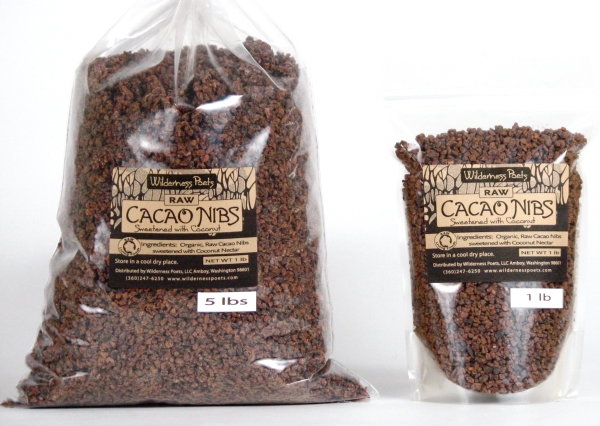
- Blend cacao powder into fruit smoothies
- Add nibs to granola and trail mixes
- Add nibs or powder to oatmeal or yogurt
- Mix cacao powder with dairy or nut milk
- Add cacao powder to your favorite protein drink
- Use cacao nibs to replace chocolate chips in frozen yogurt, pancakes, muffins, cookies, quick breads, etc.
- Dip the nibs in RAW honey and freeze them for a great snack!
To conclude, I've included something to get you started with raw chocolate—Kelly of www.thespunkycoconut.com shares a 3-ingredient recipe from the cookbook, The Paleo Chocolate Lovers' Cookbook. It's dairy-, caffeine-, and sugar-free! (see recipe below)
- www.doranpower.blogspot.com
- www.smartpei.typepad.com
- www.builtlean.com
- www.hempspread.com
- www.thespunkycoconut.com
 Alice Osborne
Alice Osborne
Weekly Newsletter Contributor since 2006
Email the author! alice@dvo.com
Recipe
3 Ingredient Strawberry White Chocolate Candies
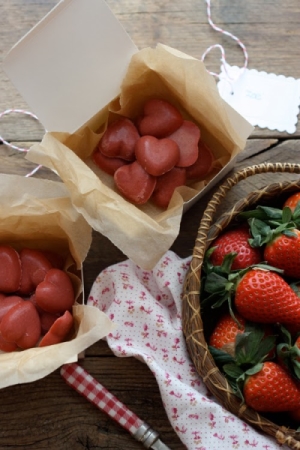
This dairy-, caffeine-, and sugar-free treat will surprise and delight even the most devoted chocolate lover!
Serving size: 8
Calories per serving: 101
1/4 cup + 1 tablespoon freeze-dried strawberries
1 tablespoon + 2 teaspoons melted coconut butter/cream concentrate
1/2 cup melted cacao butter
Directions:
Bring a small heavy-bottomed pot of water to a boil. Turn off the heat and put the jar of coconut butter/cream concentrate in the hot water. Let sit for 20 minutes. Stir. Repeat if needed. Place melted cream in a blender.
In a double boiler add an inch of water and bring to a simmer; reduce heat to low and add the cacao butter to the top bowl. As soon as butter is melted measure 1/2 cup and add it to the coconut butter/cream concentrate in the blender. Also add the ground freeze-dried strawberries.
Blend ingredients well and allow candy to come to room temperature. You can speed the process by putting the blender of candy in the freezer for at least 10 minutes. When the mixture is room temperature, blend it again, then pour it into candy COLD molds or drop by rounded spoonfuls onto parchment or waxed paper. (If the candy mold isn't cold, then the ground strawberries will separate, and the candy won't be as pretty.) Freeze the candy right away to solidify. Keep candies frozen to prevent melting.
(Important: Make sure that your bowl, blender, and all other equipment are completely dry, or the chocolate will separate!)
Recipe formatted with the Cook'n Recipe Software from DVO Enterprises.
